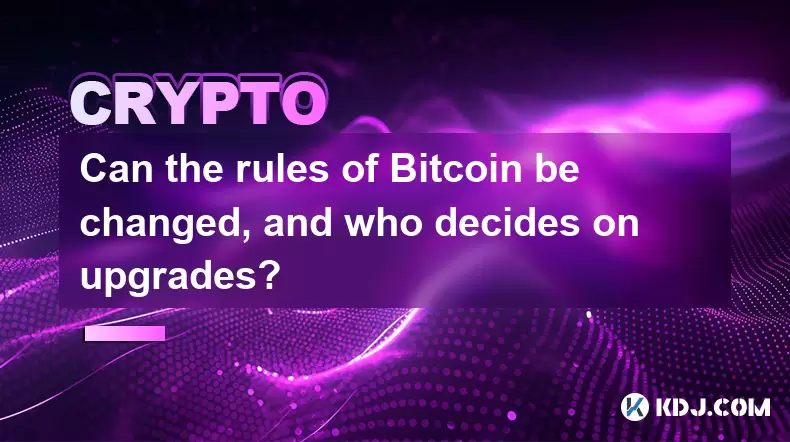-
 Bitcoin
Bitcoin $113900
-1.39% -
 Ethereum
Ethereum $3517
-4.15% -
 XRP
XRP $3.009
1.59% -
 Tether USDt
Tether USDt $0.9997
-0.04% -
 BNB
BNB $766.8
-1.41% -
 Solana
Solana $164.6
-2.38% -
 USDC
USDC $0.9998
-0.02% -
 TRON
TRON $0.3277
0.65% -
 Dogecoin
Dogecoin $0.2023
-1.67% -
 Cardano
Cardano $0.7246
0.05% -
 Hyperliquid
Hyperliquid $38.27
-4.77% -
 Sui
Sui $3.528
-0.52% -
 Stellar
Stellar $0.3890
-0.73% -
 Chainlink
Chainlink $16.16
-2.69% -
 Bitcoin Cash
Bitcoin Cash $539.9
-4.38% -
 Hedera
Hedera $0.2425
-2.00% -
 Avalanche
Avalanche $21.71
-0.97% -
 Toncoin
Toncoin $3.662
5.73% -
 Ethena USDe
Ethena USDe $1.000
-0.02% -
 UNUS SED LEO
UNUS SED LEO $8.964
0.35% -
 Litecoin
Litecoin $107.7
2.33% -
 Shiba Inu
Shiba Inu $0.00001223
-0.40% -
 Polkadot
Polkadot $3.617
-0.97% -
 Uniswap
Uniswap $9.052
-2.49% -
 Monero
Monero $295.1
-3.79% -
 Dai
Dai $0.9999
0.00% -
 Bitget Token
Bitget Token $4.315
-1.85% -
 Pepe
Pepe $0.00001060
0.11% -
 Cronos
Cronos $0.1342
-2.72% -
 Aave
Aave $256.0
-0.87%
Can Bitcoin be traced?
Contrary to popular belief, Bitcoin's public ledger, address ownership, KYC regulations, chain analysis, and forensic techniques enable the tracing of transactions linked to specific entities or individuals.
Sep 27, 2024 at 05:06 pm

Can Bitcoin be Traced?
Understanding Bitcoin's Traceability
Bitcoin (BTC) is a decentralized cryptocurrency known for its anonymity. However, it is not entirely untraceable, contrary to popular belief. Here's a comprehensive analysis of Bitcoin's traceability:
1. Public Ledger:
Bitcoin transactions are recorded on a public blockchain, which is accessible to anyone with an internet connection. Each transaction includes details such as transaction hash, sender's and receiver's addresses, and the amount transferred. While the addresses themselves do not reveal personal information, the blockchain serves as a permanent record that can be analyzed.
2. Address Ownership:
Bitcoin addresses are pseudonymous, meaning they do not directly identify individuals. However, through various techniques such as blockchain analysis, it is possible to link addresses to specific entities or wallets. This can occur through pattern recognition, geographical location of the wallet, transaction patterns, and social media analysis.
3. Know-Your-Customer (KYC) Regulations:
Centralized cryptocurrency exchanges, such as Binance and Coinbase, require users to undergo KYC procedures. These regulations mandate the collection of personal information, including identity verification and proof of address. This enables law enforcement agencies to trace Bitcoin transactions associated with known individuals.
4. Chain Analysis:
Blockchain analysis tools allow investigators to track the movement of Bitcoin funds through the blockchain. They can identify patterns, connections between addresses, and determine the source and destination of funds. This technique is commonly used by law enforcement agencies and forensic auditors.
5. Transaction Mixing Services:
While Bitcoin transactions are recorded on the blockchain, mixing services allow users to merge their coins with other transactions, making it difficult to trace the origin and ownership of funds. However, advanced forensic analysis can still uncover links between mixed transactions.
6. Privacy Coins:
Some cryptocurrencies, such as Monero and Zcash, offer enhanced privacy features that make them more challenging to trace. They use cryptography to hide transaction details, obscuring the addresses of both the sender and recipient.
Conclusion:
While Bitcoin provides a level of anonymity, it is not completely untraceable. Government regulations, central exchanges, blockchain analysis, and advanced forensic techniques can facilitate the tracing of Bitcoin transactions linked to individuals or entities. However, privacy coins and transaction mixing can offer additional layers of protection for those seeking enhanced privacy.
Disclaimer:info@kdj.com
The information provided is not trading advice. kdj.com does not assume any responsibility for any investments made based on the information provided in this article. Cryptocurrencies are highly volatile and it is highly recommended that you invest with caution after thorough research!
If you believe that the content used on this website infringes your copyright, please contact us immediately (info@kdj.com) and we will delete it promptly.
- Bitcoin Strategy: Saylor's Not Hoarding, He's Building an Empire
- 2025-08-02 22:30:12
- Bitcoin Bloodbath: Macro Pressures and Liquidations Unleash Crypto Chaos
- 2025-08-02 22:30:12
- Worldcoin, Identity, WLD Price: Decoding the NYC Crypto Buzz
- 2025-08-02 21:10:12
- Shiba Inu: Utility and Community Strength Drive Crypto's Evolution
- 2025-08-02 21:50:12
- Crypto Donations, Trump PAC, and Bitcoin: A New York Minute on Political Coin
- 2025-08-02 20:30:12
- Crypto Market Under Pressure: Bearish Momentum and Rising Volatility Take Hold
- 2025-08-02 20:30:12
Related knowledge

What is the difference between holding Bitcoin on an exchange versus in a personal wallet?
Aug 02,2025 at 03:15pm
Understanding Custodial vs Non-Custodial ControlWhen holding Bitcoin on an exchange, users are essentially entrusting their assets to a third party. E...

Can governments shut down or ban Bitcoin?
Aug 02,2025 at 09:44am
Understanding Bitcoin’s Decentralized StructureBitcoin operates on a decentralized peer-to-peer network, meaning it is not controlled by any single en...

Can the rules of Bitcoin be changed, and who decides on upgrades?
Aug 02,2025 at 06:36am
Understanding Bitcoin's Governance ModelBitcoin operates without a central authority, which means no single entity has the power to unilaterally chang...

Who controls the Bitcoin network if there is no central company or bank?
Aug 02,2025 at 06:01pm
Understanding Decentralized Control in BitcoinThe Bitcoin network operates without a central authority, which raises the question of who controls it. ...

What is Bitcoin, and how does it function as a digital currency?
Aug 02,2025 at 04:01am
Understanding Bitcoin as a Digital CurrencyBitcoin is a decentralized digital currency that operates without the need for a central authority such as ...

What is the significance of the 21-week EMA in a Bitcoin bull market?
Jul 10,2025 at 06:56pm
Understanding the 21-Week EMA in Cryptocurrency AnalysisThe 21-week Exponential Moving Average (EMA) is a technical indicator widely used by traders a...

What is the difference between holding Bitcoin on an exchange versus in a personal wallet?
Aug 02,2025 at 03:15pm
Understanding Custodial vs Non-Custodial ControlWhen holding Bitcoin on an exchange, users are essentially entrusting their assets to a third party. E...

Can governments shut down or ban Bitcoin?
Aug 02,2025 at 09:44am
Understanding Bitcoin’s Decentralized StructureBitcoin operates on a decentralized peer-to-peer network, meaning it is not controlled by any single en...

Can the rules of Bitcoin be changed, and who decides on upgrades?
Aug 02,2025 at 06:36am
Understanding Bitcoin's Governance ModelBitcoin operates without a central authority, which means no single entity has the power to unilaterally chang...

Who controls the Bitcoin network if there is no central company or bank?
Aug 02,2025 at 06:01pm
Understanding Decentralized Control in BitcoinThe Bitcoin network operates without a central authority, which raises the question of who controls it. ...

What is Bitcoin, and how does it function as a digital currency?
Aug 02,2025 at 04:01am
Understanding Bitcoin as a Digital CurrencyBitcoin is a decentralized digital currency that operates without the need for a central authority such as ...

What is the significance of the 21-week EMA in a Bitcoin bull market?
Jul 10,2025 at 06:56pm
Understanding the 21-Week EMA in Cryptocurrency AnalysisThe 21-week Exponential Moving Average (EMA) is a technical indicator widely used by traders a...
See all articles

























































































